Agnés Varda's Film School: How to Raise Money for Impossible Films
Rosalie Varda, producer of Varda By Agnés, shares secrets from her mother's storied career.

"I did things that weren't done," says the late Agnés Varda, speaking to an audience of film students in Agnés By Varda. This is Varda in a nutshell: no-nonsense, inimitable, and chock-full of filmmaking advice. The French New Wave auteur, who died at the age of 90 this year, spent the last five years of her life imparting wisdom on a new generation of filmmakers in masterclasses around the world.
Agnés By Varda, her final film, was inspired by these classes—or, as Varda preferred to call them, "filmmaking chats." Varda's daughter and long-time producer, Rosalie, thought that the world deserved to benefit from her mother's insights on creativity and cinema. Varda By Agnés is the director's final bow, and it's one of the most enjoyable films of her prolific career.
"Agnés had been through all the technology since 1949. After she bought her first digital camera, everything changed."
Although her contemporaries Jean-Luc Godard and François Truffaut often steal the thunder, Agnés Varda truly invented French New Wave cinema. Varda's first film, La pointe courte (1955), pioneered many aesthetic, narrative, and production practices that are now emblematic of the movement (not to mention their indelible impact on modern cinema): tracking shots, jump cuts, the use of non-professional actors, improvised dialogue, breaking the fourth wall, and blending fiction with documentary footage. Varda made La pointe courte at 26 without any background in filmmaking or connections to the industry; she'd seen few movies in her life, and drew inspiration from "painting, books, and life." She filmed in the coastal town of Sète, in the South of France, where she grew up, with a budget of $14,000.
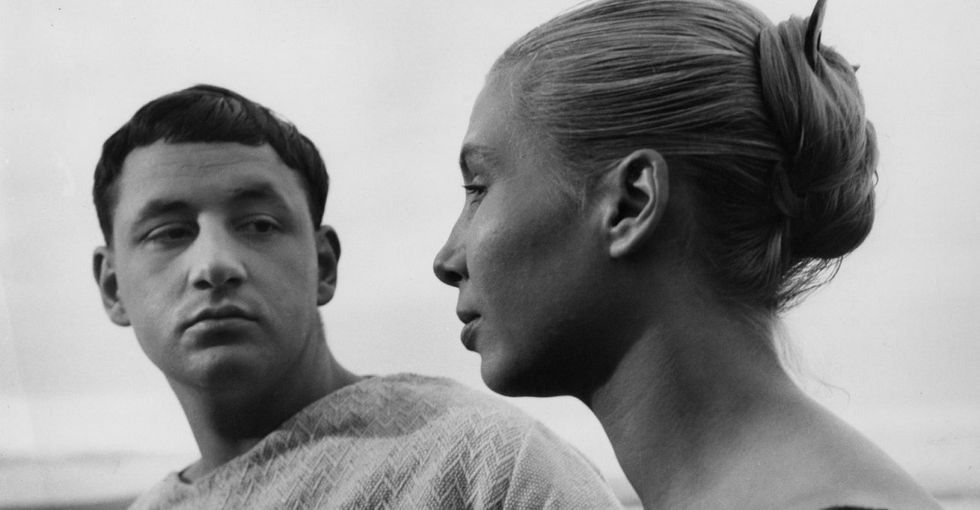
Varda's first film set the stage for a six-decade career of cinematic rule-breaking. In Agnés By Varda, she explains her philosophy of cinécriture, or cine-writing—a concept she coined to define writing with the camera, or "all the choices you make in the frame," as she describes it in the film.
For Varda, the frame was an engine of surprise. She used it to upend expectations and to put reality in conversation with representation. "You are guided by what you film," she says in Agnés By Varda. Life itself was her mise-en-scène, and yet—ever the fan of duality—Varda had masterful command over the cinematic form, and every decision she made was intentional. In one memorable scene from the film, Varda sits on a moving dolly as she explains her vision behind the 13 tracking shots in Vagabond (1985). Each shot is a minute long, and they all move right to left, which Varda describes as "jarring because it’s the opposite of how we read in the West."
Rosalie Varda is, in many ways, the antithesis of her mother. This made them perfect partners. Rosalie is self-effacing; Agnés was headstrong. Rosalie had a handle on the creative logistics; Agnés was the creative visionary. No Film School sat down with Rosalie following the premiere of Agnés By Varda at the 2019 New York Film Festival. The screening had a certain sentimental value—in 1977, Agnés became the first female director to open the prestigious festival with her film One Sings, the Other Doesn’t.
In our interview, Rosalie reveals how she raised money for many of her mother's films, including Agnés By Varda, even though she knew the films wouldn't be profitable at the box office. She also explains how her mother's work ethic, which she inherited herself, fueled much of their combined success; how Varda's methodology changed as digital filmmaking evolved; and so much more.
No Film School: How did you decide to produce this film for your mother, originally?
Rosalie Varda: The idea for Agnés By Varda came because I was traveling with Agnés a lot. She was doing masterclasses all over the world, at universities and cinemas and museums. She hated the term masterclass though. She'd say, "Master? I'm not a master."
Every time she did a masterclass, I thought she was speaking so well about her own work that we really should do a film about it. I wanted her to help us to understand the answers to questions that even I, her daughter, would like to ask her, about inspiration, shooting, editing, and all of that. We thought that [we could break down the film] by the three stages of her life: photographer, filmmaker, visual artist.
When she started the project, she knew this would be her last film. She was already sick and tired. So she said, "I'll finish it for the Berlin Film Festival." When we went there [to premiere Agnés By Varda], and we did the last press conference together, it was a beautiful moment. The theater was full. People understood that this would be her last film, and that she wanted to share a little bit of her knowledge and her process as a filmmaker. The film is very educational.
"She always said, 'You should not just shoot and then edit what you shoot; you should think of how you'll edit the film, and then shoot it.'"
NFS: What are some things you ended up learning about your mother as a director through the process of making this film?
Varda: Agnés had been through all filmmaking technology since 1949. When she started with Jean Renoir, she had a Rolleiflex, and then she had a Leica. She filmed in 35mm and 60mm. In 2000, digital changed the way she filmed entirely. She did documentaries, short films, narrative features, and mid-length films. But what is for certain is that after she bought her first digital camera, everything changed.
Also, in the process of producing this film, I realized that she loved being in the editing room. Editing, for her, was really important. It was like a puzzle. She always said, "You should not just shoot and then edit what you shoot; you should think of how you'll edit the film, and then shoot it." When I first saw her direct, I thought it looked easy. It looks like you just take your camera and shoot. But she told me that it's not easy to make it look easy. It takes a lot of preparation.
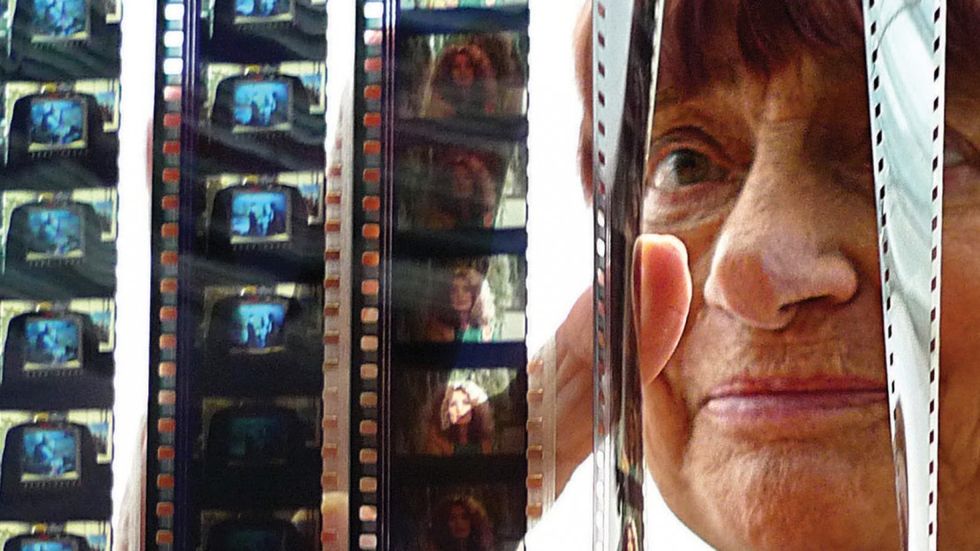
NFS: You said everything changed when she got a digital camera. What, specifically, shifted for her?
Varda: I think the liberty of a digital camera for her is that she could put in her bag. It gave her the freedom to go out and shoot with a very small crew to film people in difficult situations, where it can be very aggressive to have a camera and crew. I think The Gleaners was possible because she had a digital camera and she could slowly get those people to open up and tell their story. Of course, Agnés never stole from people. She wanted people to agree to share with the camera, which is very different.
Digital cameras also led her to discover visual art because, in the editing room, she was able to test things out very quickly.
NFS: You mentioned sharing. That did seem to be her philosophy. In the film, you show how she worked collaboratively with a lot of the people that she worked on her movies with. She had her vision, but then, for example, on Vagabond, she brought in the actor and said, "The backstory is up to you. You fill in the blanks."
Varda: She was very open to people on the set. She never closed the sets. She never said, "Everything's in the script, so we're going to shoot this, and that's all." She was very well-prepared, but if, in the middle of filming, she had an opportunity to add something, she would do it.
"My mother and I were good partners. She trusted me when I said, 'We will be able to make this film. We don't have the money yet, but we will find it.'"
NFS: What do you think was the most important wisdom she shared with students that came to her masterclasses?
Varda: She always said to film students, "Work more. You are a little bit lazy. Stop saying, 'I'm going to shoot.' Just shoot!" She also used to say, "Oh, my God, film students do five years of studying. They should take a camera and go and shoot!"
In general, she thought filmmakers should strive for excellence.
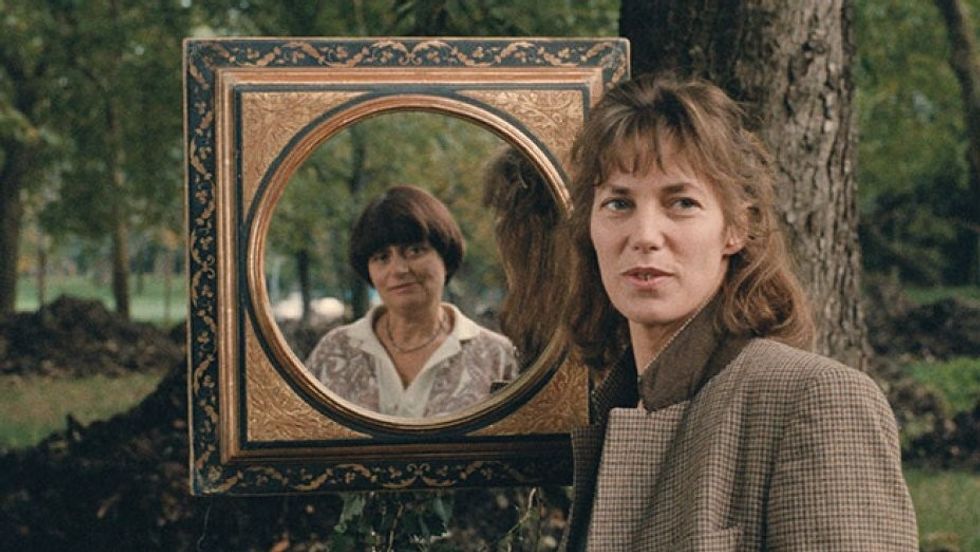
NFS: What do you think excellence meant to her?
Varda: I think it meant that you should do the best you can, but push yourself, you know? You don't just write your thing and it's done. No, you re-write, you re-read, you re-do.
I remember when I started as a costume designer, I was in training and internships. We worked 14 hours a day. It was a lot, but I felt sometimes the other crew were a little bit lazy during the process. It's not that they weren't bright—they were maybe more bright than I was. But they worked less hard. I was like a little soldier. I accepted my work.
This work ethic has really helped me in my life. I can work a lot. I'm never tired. Agnés was never tired. The crews on a lot of Agnés's films were very young, and they were like, "We're tired." She'd say, "I am not tired. I don't want anybody to be tired on the set. We have to finish what we have to do." She had so much good energy, and she was so curious, that it forced us to be better. It gave us the energy to be better.
"She was totally conscious of all the people who helped her in her films."
NFS: You felt inspired by her.
Varda: Yes, because the bar was high.
I'm working hard for her legacy, too, with my brother, Mathieu Demy, and our company, Ciné Tamaris. When I get tired, I think of her, and I say, "She would never be tired."
NFS: Speaking of her legacy, what do you think it means it for students learning filmmaking?
Varda: The young generation, I think, was introduced to Agnés's films with The Gleaners. I'm not talking about film students, specifically; I'm talking about young people that are not studying cinema. They discovered her through this film.
What I have seen in the last 10 years is that more and more of the young generation came out to her masterclasses. They had seen her films and were trying to meet her. She's very modern. She doesn't say, "I'm old; I know the things. You're young; you don't know the things."
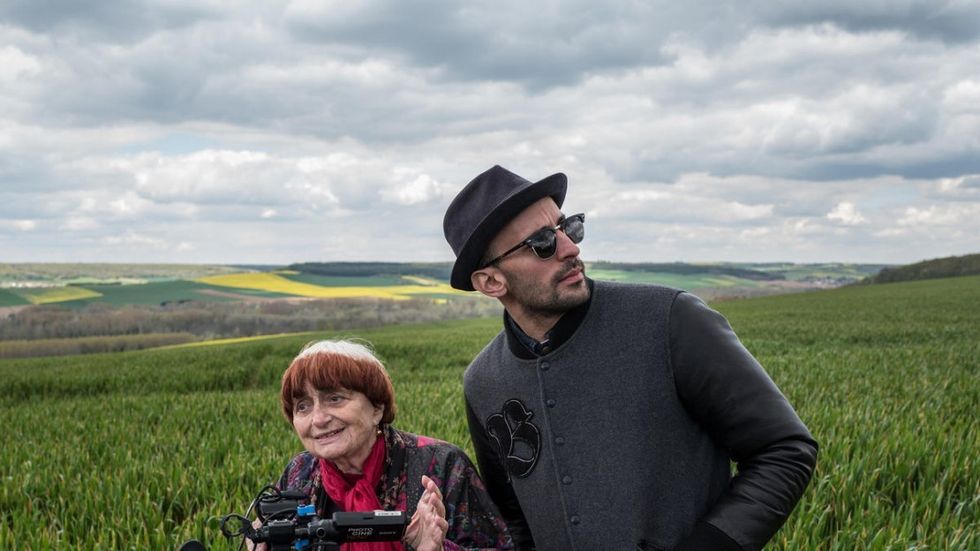
Varda: Also, she had two colors of dyed hair. She didn't look like your grandmother. She wasn't your grandmother. She was more fun!
Maybe her collaboration with JR helped her to be known by people who are, let's say, following JR on Instagram and didn't really know about Agnés Varda. Maybe it made them laugh to see the two clowns having fun. Either way, I don't think you need to know all Agnés' film to see Agnés By Varda. I think you can see even it if you don't really know who she is.
NFS: In Beaches of Agnés, Agnés holds a mirror up to people on the crew and literally shows the camera who is behind the camera. You show this scene in Varda By Agnés, too. It's one of my all-time favorite scenes from her films, and I think it speaks volumes about her process, and who she was.
Varda: Those were film students from a cinema school in Belgium. On set, she thought, "I want them to remember working on this film." The shoot was tough. It was in the sun. The film students were not paid. Suddenly, Agnés had the idea for each of them to take a mirror and show themselves. She was totally conscious of all the people who helped her in her films. I think she was very generous about that.
"It's not so easy to work with your mother when she's a little dragon!"
But I don't want to be the daughter who says, "My mother is perfect." That's not my purpose. She was not perfect. Nobody is perfect. She was a tough woman and sometimes it was difficult to be always working and re-doing things for her.
Working alongside her was a very rich experience. I did not realize how much energy it takes to be an artist. I knew she couldn't have made all of her films without having somebody [produce for her], either me or somebody else. But I was her daughter. We were good partners. We would argue a little bit, but there was something very deep between us.
I would read everything she would write before leaving the office. I would say things like, "This is not what you're after in this scene." Sometimes she didn't like it so much, but she was always very conscious of listening. We had a very positive working relationship. She knew she could trust me with everything. It's not so easy to work with your mother when she's a little dragon!
Sometimes people have asked me, "How do you feel that your mother is an icon?" I don't have any ego. I was there to help her. I knew my place. I'm not the one who directed those films, you know? I'm here to help people see those films. I knew the job I was there to do.
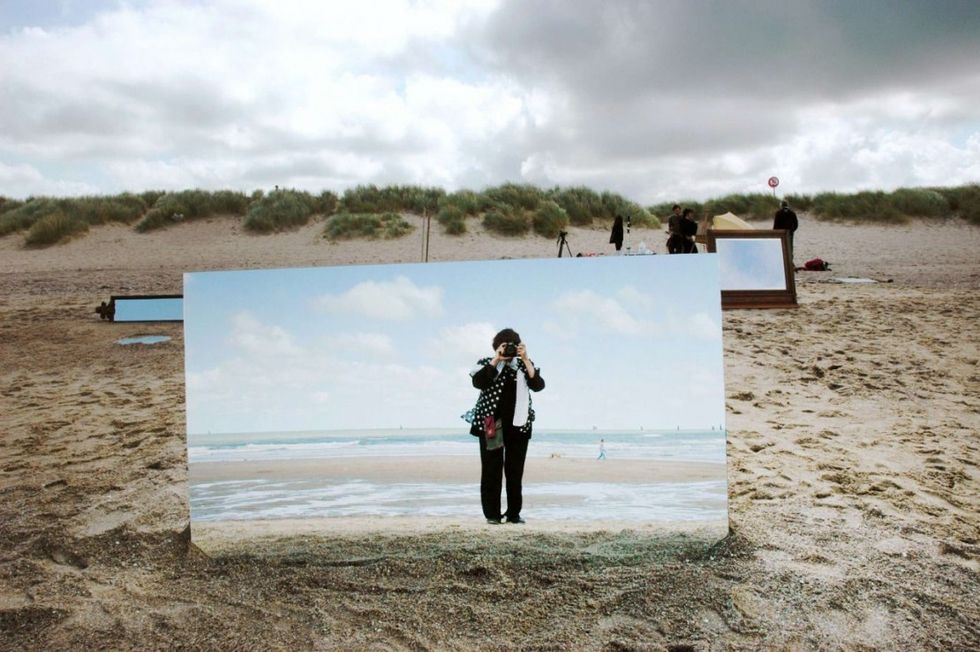
NFS: What was it like being her producer, specifically, as opposed to producing other films?
Varda: Our films were really in the margins. We're not in the big business, so it's not the same work.
Fundraising was like grocery shopping: you have a little money and you have to deal with what you have. You put in your basket and you do a bit of shooting. Then, you go back out and get more money.
It's was difficult because when Agnés began a project, you never knew how much time it was going to take. The budget couldn't be fixed. We'd have a budget, but I'd always know it would end up being more.
"It's tough to find money to make a film, even for Agnés Varda and JR. I have to go and pitch the movie so they're excited to give me money even though they won't get it back."
NFS: How did you find the money for each movie?
Varda: Different places. Not Faces Places, but different places. [Laughs]
I looked everywhere for investors. It's tough to find money to make a film, even for Agnés Varda and JR. People did not believe in that project. So it's always hard to raise money. You have to be creative. You get $20 there, $50 there, $100 there. It's a challenge that I like.
NFS: I had no idea it was difficult to raise money for her films. She's such a legend.
Varda: She's a legend, but she didn't make money. So when I was raising money to make her films, I knew they wouldn't make money [at the box office].
NFS: What do you tell investors when you know you won't be able to pay them back?
Varda: Well, I have to tell the truth. I have to go and pitch the movie so they're excited to give me money even though they won't get it back. I have to be good enough that the positive of the pitch outweighs the negative of the pitch. They forget the part where they don't make money.
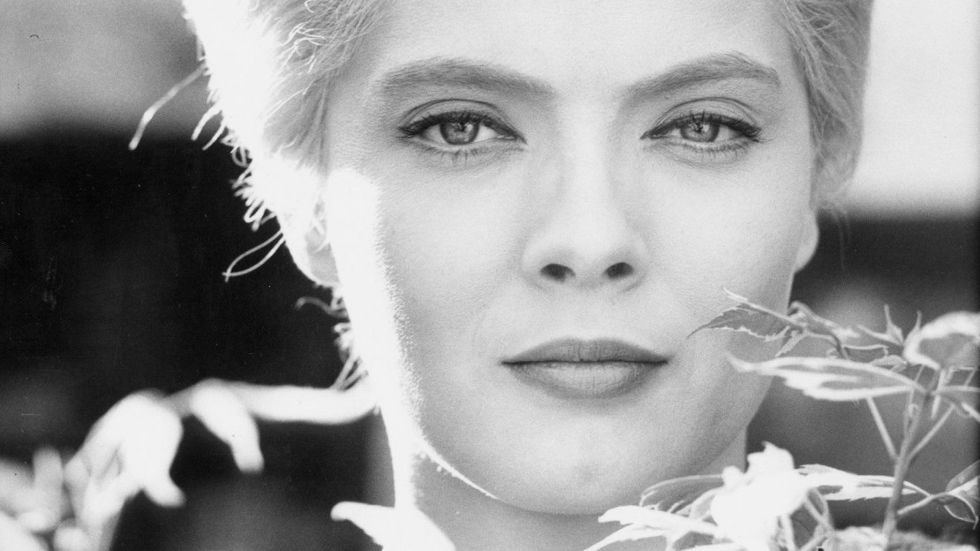
Varda: We had people who helped us along the way. Nicole Cassell helped us. Eva Longoria helped us. Dany Boone, who's a very popular French actor, gave money. We did a co-production with a friend called Scarlett Production. Then, there was the Kering Group, which owns a lot of fashion things. They have a program called Women in Motion. Agnés took part in this program, and they gave us money.
NFS: It also must be a challenge, once you have the money, to be able to figure out how best to use it when you're working with someone who has such big ideas.
Varda: That's the work of the producer. Sometimes you have to say "no." Even to your mother!
NFS: How did you know when to say "no" to her?
Varda: That's my job. I said it when we were not prepared enough to go and shoot. I had to think, do they want to shoot now because they want to shoot, or are they ready to be shooting? You have to respect the artists. You're there to put them in the best situation to do it.
But to say "no" to Agnés in my situation is not the same thing as when you have a big studio on a big movie saying, "No, you cannot close Avenue of the Americas for three blocks, and put 2,000 people in period costume. It's going to cost 1 million dollars, so we can't do it." At my level, it's really more about the little things you say "no" to.
NFS: Well, you've done an amazing job.
Varda: I do my job. It's not amazing. But I do it with my heart.
NFS: That's what makes it amazing.
Varda: Maybe I'm a producer who works more with my heart.
My mother and I were good partners. She trusted me when I said, "We will be able to make this film. We don't have the money yet, but we will find it." In each project, I always found the money at the end. When they wanted to do reshoots, I didn't say anything to them but I thought, "Okay, we don't really have the money to shoot again, so we will have to find it." And I had to get creative.
To be a producer is to be creative. You're not creative in an artistic way, because it's the film director who is, but you're creative in another way: putting all the people together, protecting the crew, finding the money. It's inventive.
It's worth it all in the end when you have the finished film. You look at it and say, "Wow, we've done it." When we started filming Faces Places, we didn't think, "Oh, we'll get nominated for an Oscar." We didn't think we would end up there. But we did.











